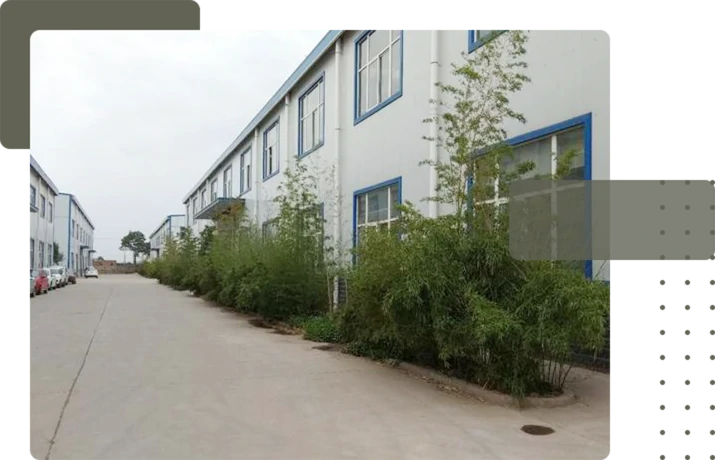Understanding the Properties and Uses of Cast Iron in Modern Applications
The Versatility and Endurance of Cast Iron
Cast iron, a term that refers to a group of iron-carbon alloys, has long captured the imagination of craftsmen and engineers alike. Its history dates back to ancient times, where it was recognized for its remarkable ability to withstand high temperatures and its resilience in various applications. This article delves into the characteristics, manufacturing processes, and diverse applications of cast iron, showcasing why it remains a staple in modern industry and domestic use.
One of the most compelling features of cast iron is its unique composition. Typically, it contains about 2-4% carbon along with silicon, manganese, and smaller amounts of impurities. This alloying process results in a material that is not only durable but also offers excellent casting properties. The low melting point of cast iron, around 1200 to 1300 degrees Celsius, allows it to be poured into molds with precision, forming intricate shapes that are often challenging to achieve with other metals.
Cast iron can be categorized into several types, including gray iron, ductile iron, white iron, and malleable iron, each with specific properties suited for different applications. Gray iron, characterized by its graphite flakes, is renowned for its excellent machinability and good wear resistance. It is commonly used in automotive parts, machinery bases, and pipes. Ductile iron, on the other hand, is known for its toughness and flexibility, making it ideal for products that require a combination of strength and ductility, such as manhole covers and structural components.
The manufacturing process of cast iron involves several critical steps. First, raw materials, including pig iron, scrap iron, and alloying elements, are melted in a furnace. Once in a molten state, the iron is poured into molds, where it cools and solidifies. The cooling process significantly influences the final properties of the cast iron, as slow cooling typically leads to the formation of graphite, enhancing the material’s strength and machinability.
cast iron

Cast iron's application is vast and varied. In the culinary world, cast iron cookware has remained a favorite among professional chefs and home cooks alike. Its ability to retain heat and distribute it evenly makes it perfect for frying, baking, and sautéing. Additionally, cast iron skillets develop a natural non-stick surface when seasoned properly, adding to their appeal. Beyond the kitchen, cast iron is widely used in the production of stoves, heat exchangers, and radiators due to its excellent thermal conductivity.
In the realm of construction and infrastructure, cast iron plays a critical role as well. Its high compressive strength and durability make it an ideal material for pipes, manhole covers, and architectural elements. Cities around the world showcase the beauty of cast iron in lamp posts, railings, and bench supports, blending functionality with aesthetics.
However, the environmental impact of cast iron production and recycling cannot be overlooked. The process is energy-intensive, and while efforts are being made to improve sustainability, industries continue to explore ways to reduce carbon emissions associated with iron casting. Innovations in technology are leading the way towards more eco-friendly production methods, emphasizing recycling and responsible sourcing of raw materials.
In conclusion, cast iron is a material that embodies the perfect blend of durability, versatility, and historical significance. From its ancient origins to its modern applications, it has not only shaped industries but also enriched everyday life. Whether sizzling on a stovetop or supporting the infrastructure of a bustling city, cast iron remains a testament to enduring craftsmanship and innovation. As we look towards a future focused on sustainability and efficiency, cast iron's legacy is sure to endure, continuing to be a vital component of our material world.
-
Wrought Iron Components: Timeless Elegance and Structural StrengthNewsJul.28,2025
-
Window Hardware Essentials: Rollers, Handles, and Locking SolutionsNewsJul.28,2025
-
Small Agricultural Processing Machines: Corn Threshers, Cassava Chippers, Grain Peelers & Chaff CuttersNewsJul.28,2025
-
Sliding Rollers: Smooth, Silent, and Built to LastNewsJul.28,2025
-
Cast Iron Stoves: Timeless Heating with Modern EfficiencyNewsJul.28,2025
-
Cast Iron Pipe and Fitting: Durable, Fire-Resistant Solutions for Plumbing and DrainageNewsJul.28,2025
-
 Wrought Iron Components: Timeless Elegance and Structural StrengthJul-28-2025Wrought Iron Components: Timeless Elegance and Structural Strength
Wrought Iron Components: Timeless Elegance and Structural StrengthJul-28-2025Wrought Iron Components: Timeless Elegance and Structural Strength -
 Window Hardware Essentials: Rollers, Handles, and Locking SolutionsJul-28-2025Window Hardware Essentials: Rollers, Handles, and Locking Solutions
Window Hardware Essentials: Rollers, Handles, and Locking SolutionsJul-28-2025Window Hardware Essentials: Rollers, Handles, and Locking Solutions -
 Small Agricultural Processing Machines: Corn Threshers, Cassava Chippers, Grain Peelers & Chaff CuttersJul-28-2025Small Agricultural Processing Machines: Corn Threshers, Cassava Chippers, Grain Peelers & Chaff Cutters
Small Agricultural Processing Machines: Corn Threshers, Cassava Chippers, Grain Peelers & Chaff CuttersJul-28-2025Small Agricultural Processing Machines: Corn Threshers, Cassava Chippers, Grain Peelers & Chaff Cutters












